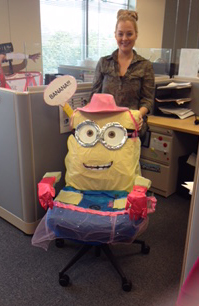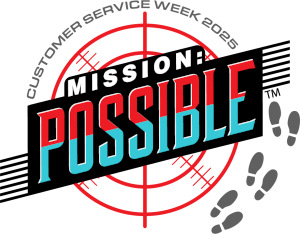
Customer Service Week activities make it fun and easy to celebrate. Each activity includes, complete instructions, leader tips, and handouts, if needed.
There are activities for on-site, remote, and hybrid teams.
New activities will be added in the months leading up to Customer Service Week. To receive announcements, sign up for free eMail Bulletins.
Okay, let’s get started
If the name of the activity is BLUE, just click to view.
If the name of the activity is BLACK you must login to your account. You will have an account if you have purchased celebration materials or Access to Ready to Use Materials this year.
Login now
Purchase Decorations, Gifts, and Stress Relievers
Purchase Downloadable Celebration / Access to Ready to Use Materials only
Free to All
Premium
Team Building
- Answer the Question
- Cake Decorating
- Cake Decorating, Nail it or Fail it!
- Camera Roll NEW!
- CanStruction
- Chair Decorating (Remote ready)
- Find Your Perfect Match
- Getting to Know You (Remote ready)
- Getting to Know You, Countdown Version (Remote ready)
- Invisible Ink Activities NEW!
- Left-Right-Left Ice Breaker NEW!
- Marshmallow Tower
- Match Up (Remote ready)
- Meme Contest (Remote ready)
- Minute to Win It
- Mission: Desk Top Scavenger Hunt NEW!
- Mission: Scavenger Hunt (On-site)
- Mission: Scavenger Hunt (Remote ready)
- Packing Peanut Art
- Penny Wars
- Recreate Famous Artwork
- Split Personality (Remote ready)
- Word Bingo
Recognition
- Build a Web of Compliments
- Opening Ceremony (with Customer Service Week pledge)
- Peer to Peer Recognition (with Caught in the Act Cards)
Skill-building
- Best and Worst Customer Service (Remote ready)
- Building Rapport
- Clear Communication
- Comprehension Challenge
- Grab Bag (Service Skills Refresher)
- How I Give Great Service
- Listening Skills
- Neck & Shoulder Rolls
- One Minute Meditation Technique
- Seated Relaxation
- Two-Way Communication (Remote ready)
- Wrist & Hand Relaxers
Note: The Customer Service Week logo, the contents of this website, and the contents of the Customer Service Week eMail Bulletins are protected by international copyright laws and may not be reproduced. However, all of the printables on this page may be printed and used as part of your celebration.
